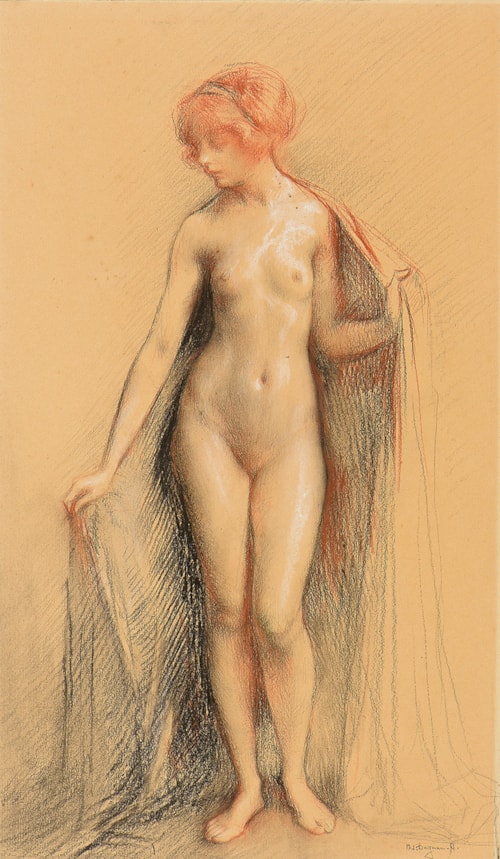
Pascal-Adolphe DAGNAN-BOUVERET
Paris 1852 - Quincey 1929
Biography
Pascal-Adolphe-Jean Dagnan-Bouveret entered the Ecole des Beaux-Arts in 1869, studying first with Alexandre Cabanel and then with Jean-Léon Gérôme. He first exhibited at the Salon in 1875, showing a painting -which was purchased by the State - and two drawings. He won second place in the Prix de Rome competition of 1876, but by 1878 had left the Ecole des Beaux-Arts. Following a visit to Franche-Comté later that year, Dagnan-Bouveret was inspired to paint subjects taken from rural life, and became a major exponent of naturalism in the later 19th century. He won medals at the Salons of 1878 and 1880, and his reputation was firmly established at the Salon of 1885, when a large painting of Horses at a Watering Place was acquired by the State. In the same year the artist was received into the Légion d’honneur, and made the first of several trips to Brittany, which was to be the inspiration for a number of important works of the later 1880s and early 1900s.
Among his most significant paintings of Breton subjects was The Pardon in Brittany, exhibited with much critical success at the Salon of 1878 and the Exposition Universelle of 1889 and today in the Metropolitan Museum of Art in New York. Dagnan-Bouveret also showed at the Salon de la Société Nationale from its inauguration in 1890 and, in the same year, at the Société des Pastellistes. From the 1890s onwards he began concentrating on portrait painting, for which he received several official commissions. Elected to the Institut de France in 1900, Dagnan-Bouveret received a grand prize at the Exposition Universelle the same year. In 1910 an album of facsimile reproductions of some of his portrait and figure drawings was published, with the title Choix de dessins de Dagnan-Bouveret. In 1930, a year after the artist’s death, a large retrospective exhibition of his oeuvre was held at the Ecole des Beaux-Arts, although by this time he was something of an anachronism, with his work long out of fashion.



